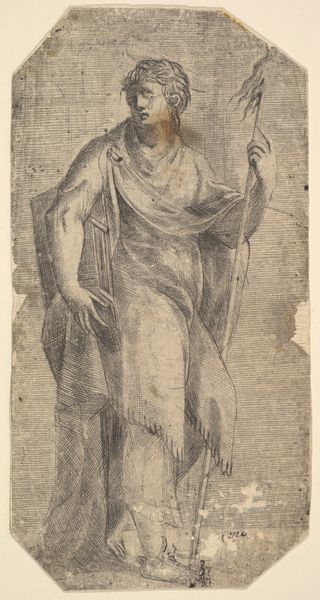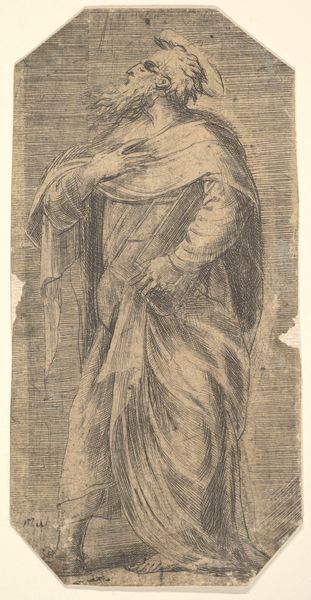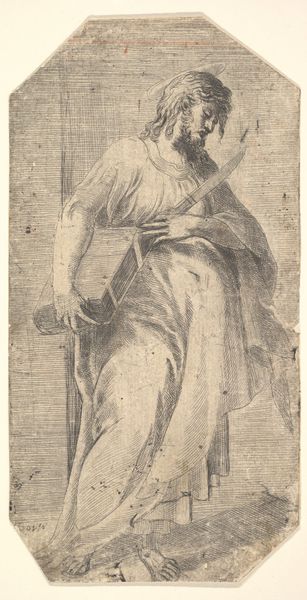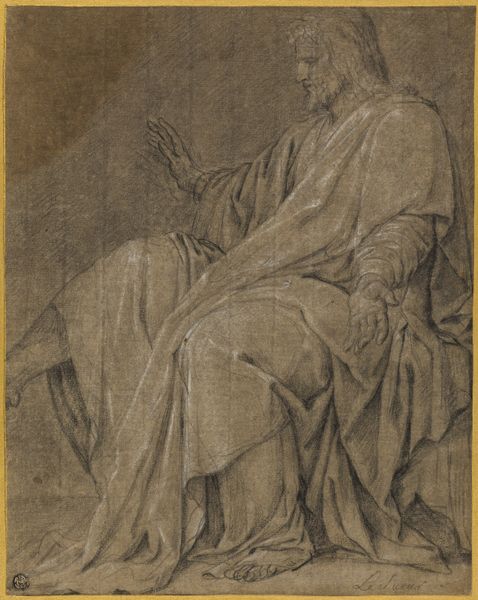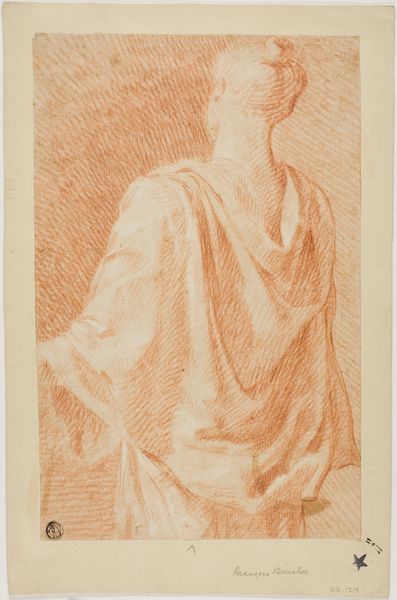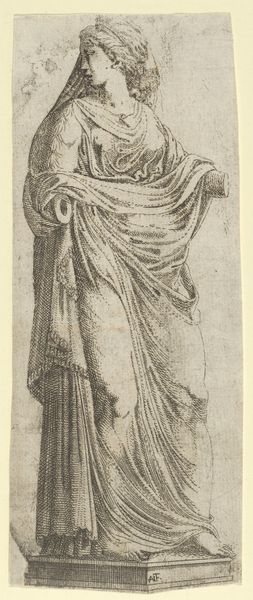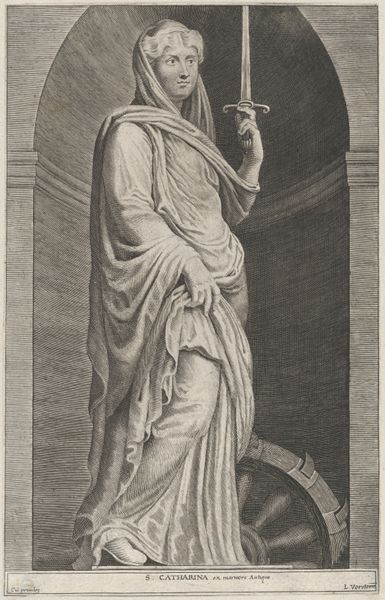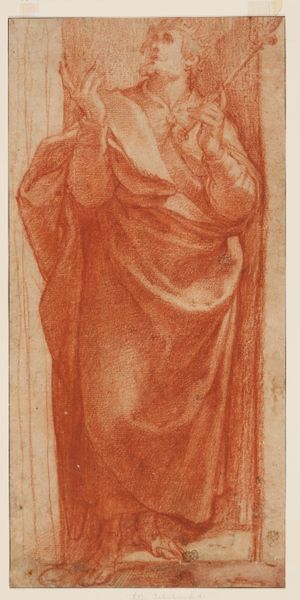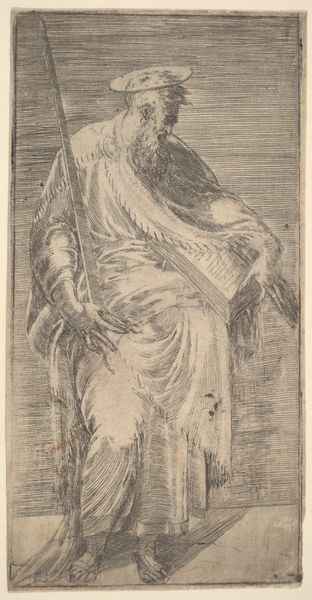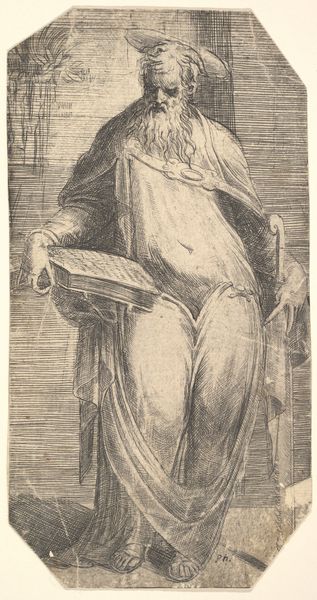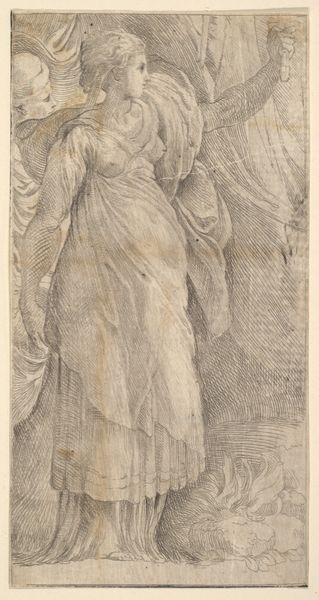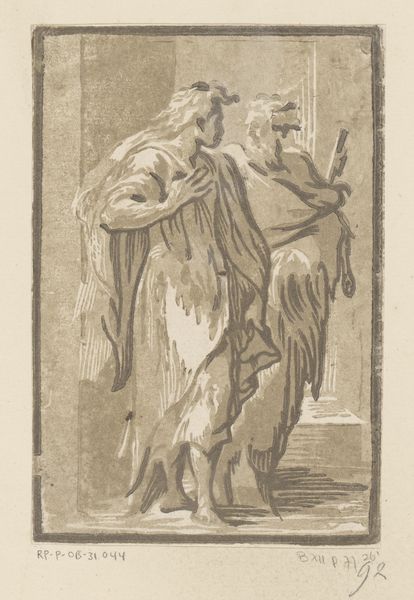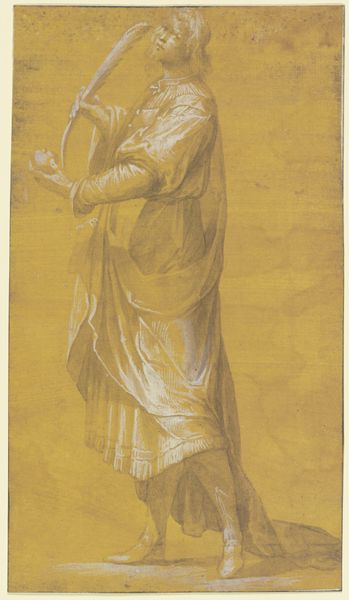
A saint, possibly Matthew, holding a staff and a book 1535 - 1545
0:00
0:00
drawing, print, etching
#
portrait
#
drawing
# print
#
etching
#
book
#
figuration
#
italian-renaissance
Dimensions: sheet: 8 11/16 x 4 1/2 in. (22 x 11.5 cm)
Copyright: Public Domain
Curator: Andrea Schiavone, also known as Andrea Meldola, created this etching sometime between 1535 and 1545. The piece, housed here at the Metropolitan Museum of Art, is titled "A saint, possibly Matthew, holding a staff and a book." Editor: My first impression is one of graceful authority. There's something about the contrapposto and the flow of the robe that commands attention, even in this relatively small scale. Curator: Schiavone worked during a period when printmaking was vital in disseminating artistic ideas across Europe. His prints, including this depiction of a possible Saint Matthew, were easily circulated. They reached diverse audiences, serving as visual interpretations of religious and historical figures. Editor: Looking at the hatching and cross-hatching, one can see Schiavone’s interest in light and shadow, manipulating depth and volume using essentially just lines. He seems less concerned with meticulous detail and more focused on creating an atmosphere of thoughtful solemnity. Curator: The identity of the sitter raises some interesting questions. Saint Matthew is usually portrayed with an angel or a winged man. Its possible, given the cultural milieu and the artist’s interpretive freedom, that Schiavone sought to capture a more generalized ideal of saintly virtue. He presented viewers with a humanistic representation instead of relying on rigid, pre-established iconography. Editor: I find myself drawn to the saint's gaze, which is directed away, lost in thought. It's fascinating how a simple turn of the head can suggest profound introspection and an almost philosophical detachment from the viewer. Curator: Indeed. Artists, their patrons, and their viewers navigated the turbulent religious landscape of the Reformation and Counter-Reformation. Works such as this served a crucial didactic function for believers who wished to affirm traditional values. Schiavone also had to contend with the demands of a marketplace. Editor: It’s clear that he was a master of economy. With the fewest marks, he suggests so much, and leaves it to the viewer’s imagination to do some of the work. It's a reminder of how potent simplicity can be. Curator: Absolutely. Considering this image within its socio-religious context and its likely use offers just one way of approaching its multiple layers of significance. Editor: Yes, and visually dissecting his artistic decisions allows us to grasp its lasting aesthetic value and the ways Schiavone achieved a mood of thoughtful contemplation.
Comments
No comments
Be the first to comment and join the conversation on the ultimate creative platform.
